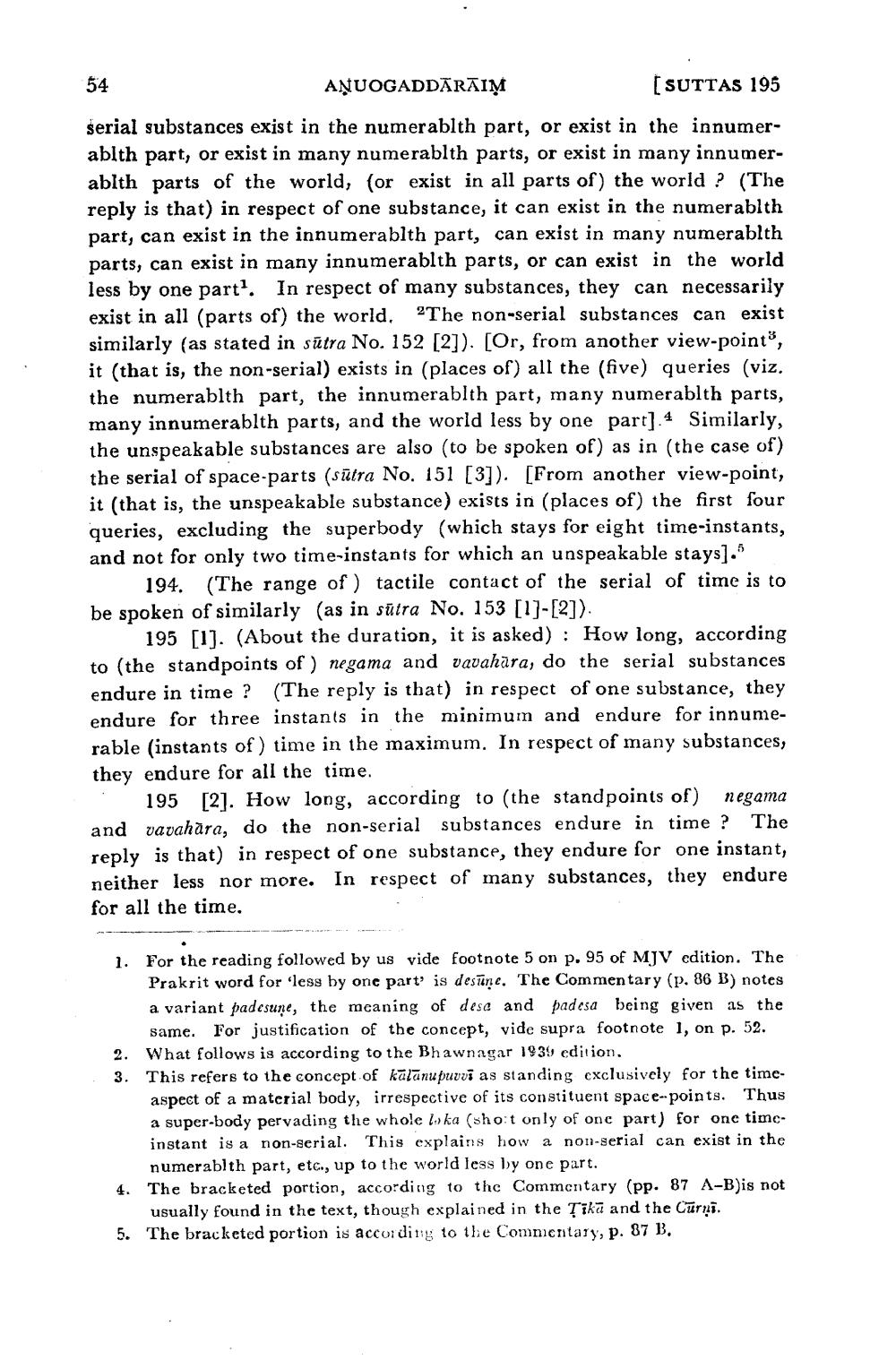________________
54
AŅUOGADDĀRĀIM
(SUTTAS 195
serial substances exist in the numerablth part, or exist in the innumerablth part, or exist in many numerablth parts, or exist in many innumerablth parts of the world, (or exist in all parts of the world ? (The reply is that) in respect of one substance, it can exist in the numerablth part, can exist in the innumerablth part, can exist in many numerablth parts, can exist in many innumerablth parts, or can exist in the world less by one part?. In respect of many substances, they can necessarily exist in all (parts of) the world. The non-serial substances can exist similarly (as stated in sūtra No. 152 [2]). [Or, from another view-point”, it (that is, the non-serial) exists in (places of) all the (five) queries (viz. the numerablth part, the innumerablth part, many numerablth parts, many innumerablth parts, and the world less by one part].4 Similarly, the unspeakable substances are also (to be spoken of) as in the case of) the serial of space-parts (sūtra No. 151 [3]). [From another view-point, it (that is, the unspeakable substance) exists in (places of the first four queries, excluding the superbody (which stays for eight time-instants, and not for only two time-instants for which an unspeakable stays].5
194. (The range of) tactile contact of the serial of time is to be spoken of similarly (as in sūtra No. 153 [1]-[2])
195 [1]. (About the duration, it is asked) : How long, according to the standpoints of) negama and vavahāra, do the serial substances endure in time ? (The reply is that) in respect of one substance, they endure for three instants in the minimum and endure for innumerable (instants of) time in the maximum. In respect of many substances, they endure for all the time.
195 [2]. How long, according to the standpoints of) negama and vavahāra, do the non-serial substances endure in time? The reply is that) in respect of one substance, they endure for one instant, neither less nor more. In respect of many substances, they endure for all the time.
For the reading followed by us vide footnote 5 on p. 95 of MJV edition. The Prakrit word for 'less by one part is desūne. The Commentary (p. 86 B) notes a variant padesune, the meaning of desa and þadesa being given as the same. For justification of the concept, vide supra footnote 1, on p. 52.
What follows is according to the Bhawnagar 1939 edition, 3. This refers to the concept of kūlānupuvvi as standing exclusively for the time
aspect of a material body, irrespective of its constituent space-points. Thus a super-body pervading the whole loka (shot only of one part) for one timeinstant is a non-serial. This explains how a non-serial can exist in the
numerablth part, etc., up to the world less by one part. 4. The bracketed portion, according to the Commentary (pp. 87 A-B)is not
usually found in the text, though explained in the sikū and the Curi. 5. The bracketed portion is according to the Commentary, p. 87 B.




